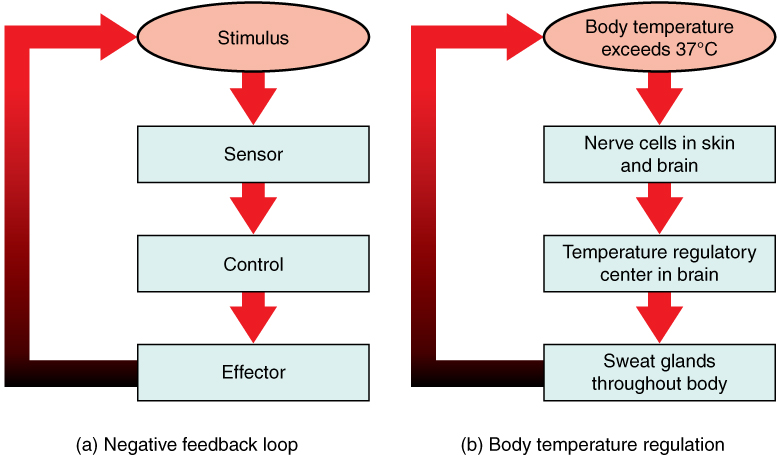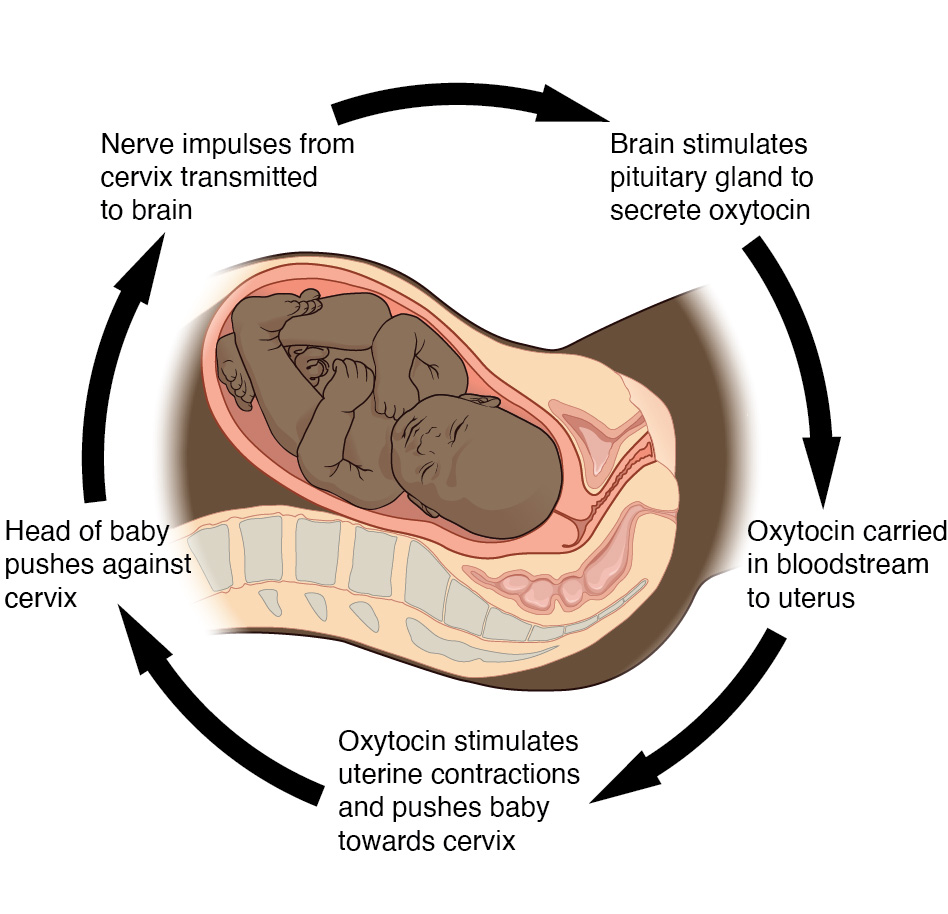1.8 Homeostasis and Feedback Systems
Homestasis and Feedback Systems[1]
Homeostasis is the steady state of internal balance that the body works to maintain. Maintaining homeostasis is vital to life! Various vital signs and levels of chemicals in the body, such as temperature, heart rate, respiratory rate, oxygen level, and hormone levels, need to be kept within a set normal range. Fluctuations outside of normal conditions must be corrected quickly, or they can cause disease or in extreme cases, even death.
Maintaining homeostasis requires the body to continuously monitor its internal conditions. From body temperature to blood pressure to levels of certain nutrients, each physiological condition has a particular set point. A set point is the physiological value considered normal. For example, the set point for normal human body temperature is approximately 37°C (98.6°F). A normal range is a set of values that is considered healthy and stable. Many physiological values, such as body temperature and respiratory rate, tend to fluctuate within a normal range. For example, the normal range of respiratory rate in adults is 12 to 20 breaths per minute.
Control centers in the brain and other parts of the body monitor for changes in homeostasis and quickly work to restore those changes by using negative and positive feedback.
Negative Feedback
Negative feedback is a process that corrects a change in homeostasis by reversing it. Reversing the change brings it back to normal. For example, if you run around the block, your heart rate will increase. After you stop running, negative feedback will restore your heart rate back to the normal range.
Negative feedback is constantly occurring throughout the human body and has three basic parts:
- Sensor/Receptor: A sensor, also known as a receptor, monitors a physiological value, such as temperature, respiratory rate, blood pressure, etc. This value is reported to the control center.
- Control Center: The control center compares the value to the normal range. If the value has changed too much from the set point, then the control center activates an effector.
- Effector: An effector reverses the situation and returns the value to the set point or normal range.
See Figure 1.11[2] for an illustration of a negative feedback loop related to body temperature.

A classic example of a negative feedback loop is body temperature regulation. Temperature sensors in nerve cells measure the body’s temperature. When the body temperature rises too high, the hypothalamus in the brain (the control center) signals sweat glands (the effectors) to activate and produce sweat, which cools the body down. Once the body temperature returns to normal, the sweating stops.
Positive Feedback
Positive feedback enhances a change in the body’s physiological condition instead of reversing it. A change from the set point or normal range results in more change, and the body moves farther away from the normal range or set point. Positive feedback in the body is normal only when there is a definite end point.
An example of positive feedback is the labor contractions that occur during childbirth. Once contractions begin, labor requires positive feedback to intensify the uterine contractions and continue the process until the baby is born. The events of childbirth must progress within a short period of time or the life of the mother and baby are at risk. See Figure 1.12[3] for an illustration of the example of positive feedback in childbirth.

View supplementary YouTube videos[4],[5] about homeostasis, negative feedback, and positive feedback:
- Betts, J. G., Young, K. A., Wise, J. A., Johnson, E., Poe, B., Kruse, D. H., Korol, O., Johnson, J. E., Womble, M., & DeSaix, P. (2022). Anatomy and physiology, 2e. OpenStax. https://openstax.org/books/anatomy-and-physiology-2e/pages/1-introduction ↵
- “105_Negative_Feedback_Loops” by OpenStax is licensed under CC BY 4.0 ↵
- “ffb186ac3f0c6371b17814118c708f63e969be36” by OpenStax is licensed under CC BY 4.0. Access for free at https://openstax.org/books/anatomy-and-physiology/pages/1-5-homeostasis ↵
- Amoeba Sisters. (2017, September 7). Homeostatis and negative/Positive feedback [Video]. YouTube. All rights reserved. https://www.youtube.com/watch?v=Iz0Q9nTZCw4 ↵
- Forciea, B. (2015, May 12). Anatomy and physiology: Homeostatis (v2.0) [Video]. YouTube. Used with permission. All rights reserved. https://www.youtube.com/watch?v=4DM2Sa5Dt0E ↵
The physiological value considered normal.
A set of values that is considered healthy and stable.
A process that corrects a change in homeostasis by reversing it.
Also known as a receptor, monitors a physiological value, such as temperature, respiratory rate, blood pressure, etc.
Also known as a sensor, monitors a physiological value, such as temperature, respiratory rate, blood pressure, etc.
Compares the value to the normal range.
Reverses the situation and returns the value to the set point or normal range.
Enhances a change in the body’s physiological condition instead of reversing it.

